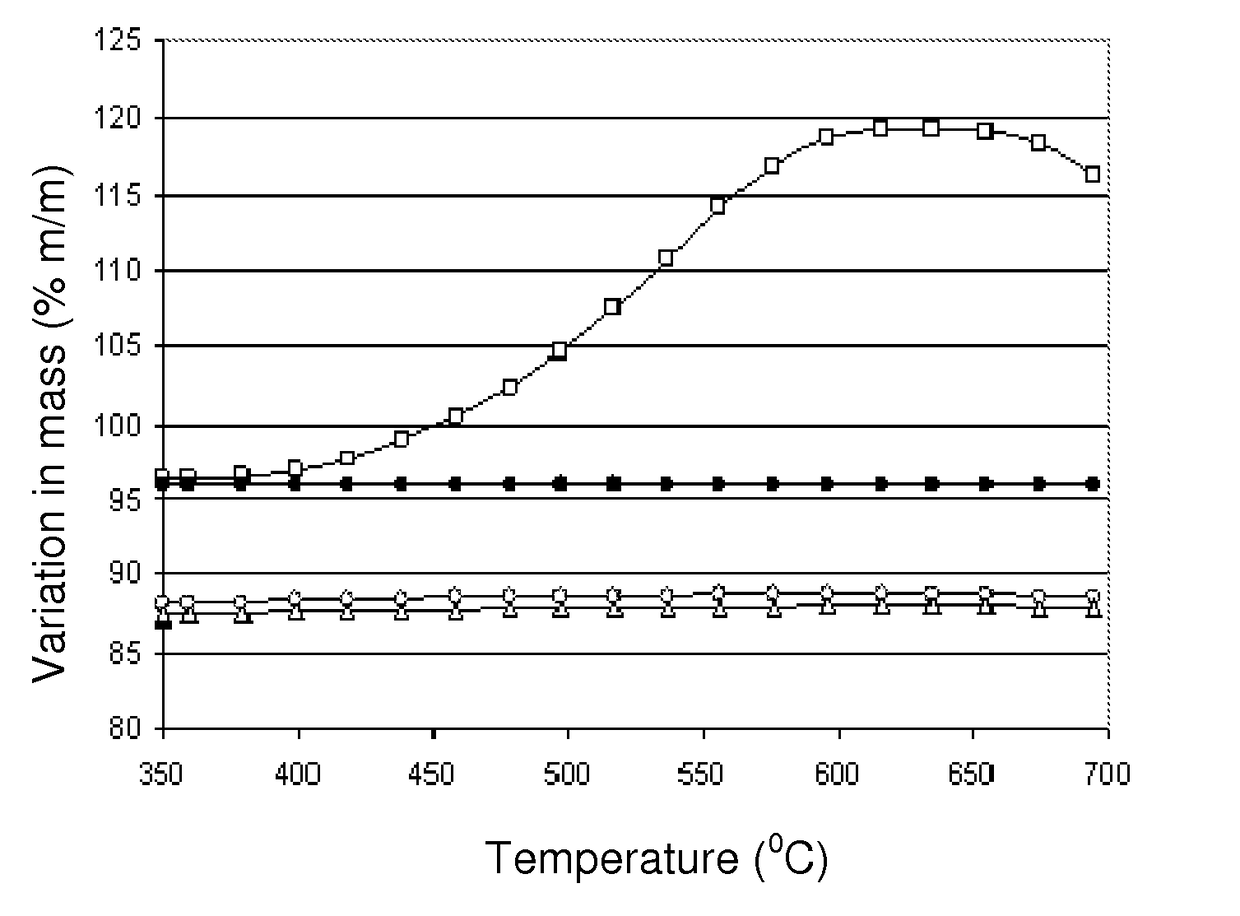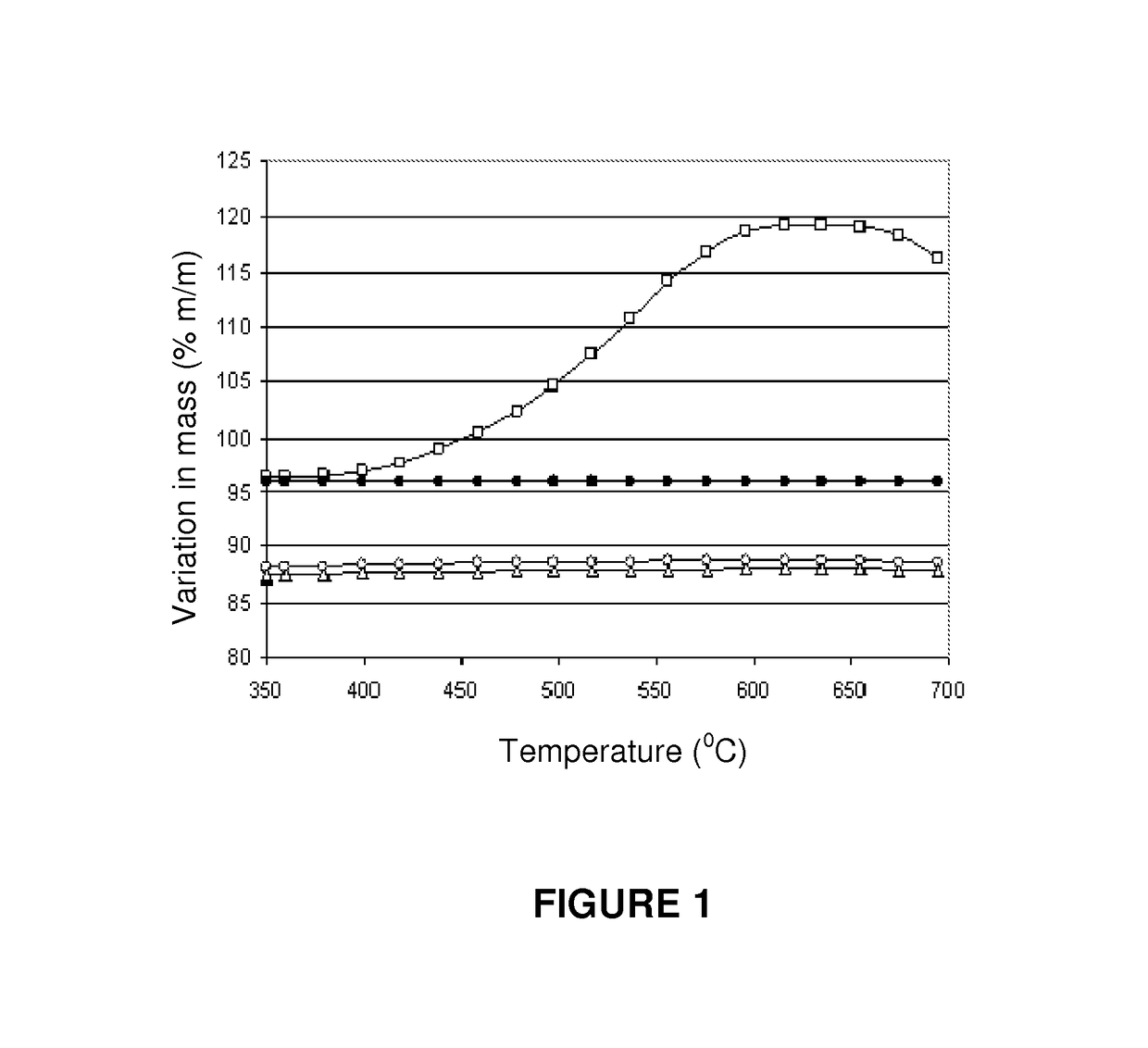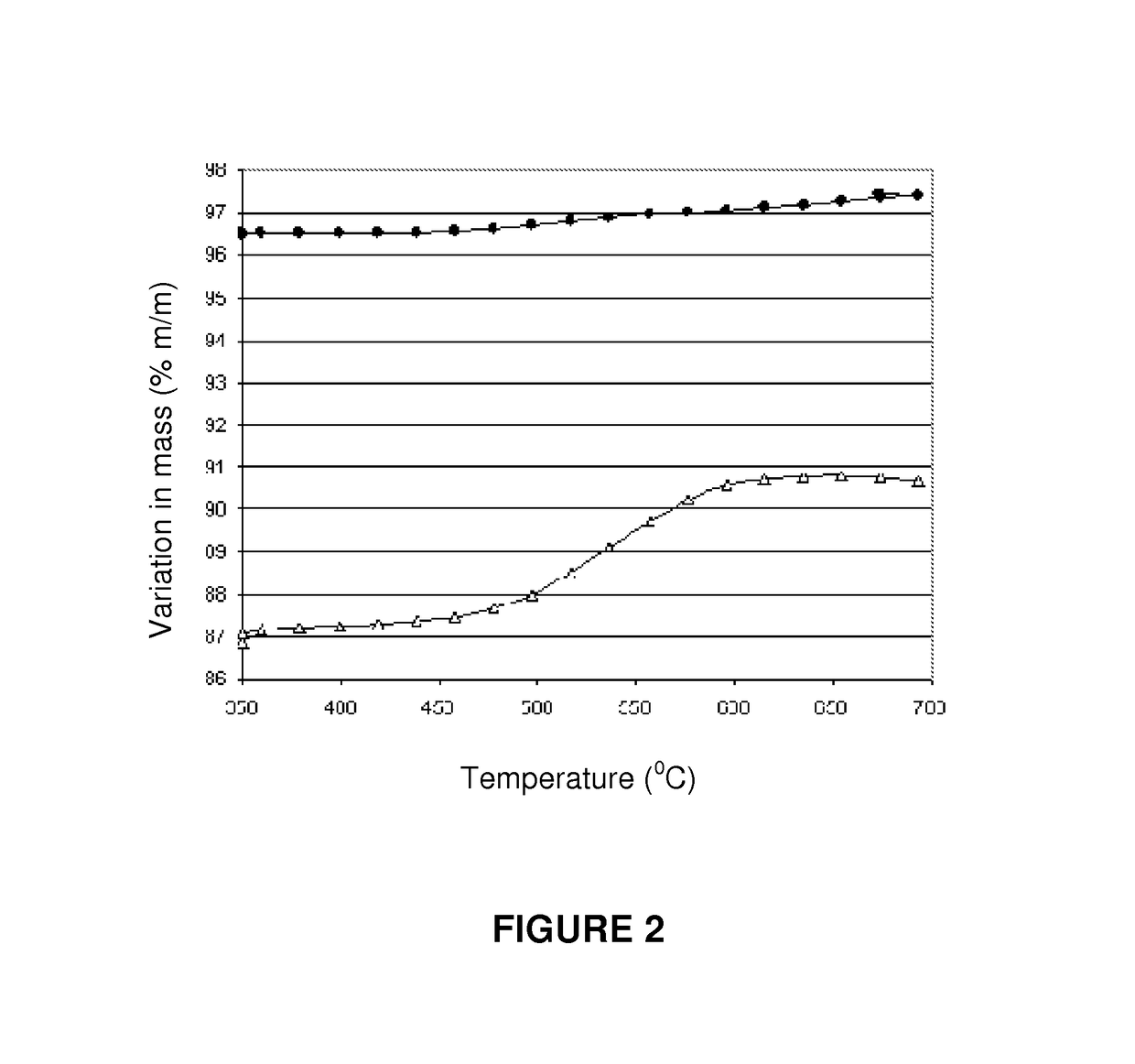Process for pre-reforming hydrocarbon streams containing olefins, pre-reforming catalyst and a process for preparing said catalyst
a technology of pre-reform catalyst and hydrocarbon stream, which is applied in the direction of physical/chemical process catalyst, metal/metal-oxide/metal-hydroxide catalyst, bulk chemical production, etc., can solve the problems of large amount of carbon, reduce catalyst activity, and high load loss in industrial reactors
- Summary
- Abstract
- Description
- Claims
- Application Information
AI Technical Summary
Benefits of technology
Problems solved by technology
Method used
Image
Examples
example 1
[0067]This example illustrates the preparation of a catalyst according to the present invention, based on nickel, lanthanum and cerium on an alumina-type support. 100 g of theta-alumina (Axens SPH 508F with a pore volume of 0.7 cm3 / g, in the form of 3 mm to 4 mm diameter spheres) were impregnated with 70 ml of an aqueous solution containing 2.95 grams of La(NO3)3.6H2O; 8.82 g of Ce(NO3)3.6H2O, and 33.03 g of Ni(NO3)2.6H2O. This material was dried at 60° C. for 2 hours, warmed in static air from 60° C. to 120° C. at a rate of 1° C. / min, and then to 250° C., at a rate of 1.4° C. / min.
[0068]The catalyst was then calcined at 450° C. for 4.5 hours to yield a catalyst of the type Ni—Ce—La / theta-alumina containing 7.6% (w / w) of NiO, 1.0% (w / w) of La2O3 and 3.0% w / w of Ce2O3.
example 2
[0069]This example illustrates the preparation of a catalyst according to the present invention. The catalyst was prepared in an identical way as in example 1, except that that the 450° C. calcining step was not performed. Instead, a reduction step was performed in a hydrogen flow, with the temperature program going from 20° C. to 730° C., at a rate of 1.5° C. / min. Following reduction, the catalyst was cooled to ambient temperature in a flow of hydrogen, and then purged with a nitrogen flow and exposed to a flow of synthetic air to passivate the metallic nickel phase formed during the reduction process.
example 3
[0070]This example illustrates the preparation of a catalyst according to the present invention, based on nickel, lanthanum and cerium on a magnesium aluminate type support. Initially a K promoted magnesium aluminate support was prepared. 300 g of commercial hydrotalcite (SudChemie CDS T-2701 1 / 16″ containing 30% MgO, the balance being alumina) were impregnated with 300 ml of an aqueous solution containing 11.06 g of KOH. The material was then calcined at 1,050° C. for 4 hours to yield a material with the crystalline structure of magnesium aluminate and containing a nominal 3% of K2O. The Ni, Ce and La phases were introduced by impregnating 250 g of the magnesium aluminate type support with 216 ml of a solution containing 7.38 g of La(NO3)3.6H2O, 22.05 g of Ce(NO3)3.6H2O and 82.58 g of Ni(NO3)2.6H2O. The material was dried at 60° C. for 2 hours, heated in static air from 60° C. and 120b° C. at a rate of 1° C. / min, and then to 250° C. at a rate of 1.4° C. / min. The catalyst was then p...
PUM
| Property | Measurement | Unit |
|---|---|---|
| temperature | aaaaa | aaaaa |
| temperature | aaaaa | aaaaa |
| pressure | aaaaa | aaaaa |
Abstract
Description
Claims
Application Information
 Login to View More
Login to View More - R&D
- Intellectual Property
- Life Sciences
- Materials
- Tech Scout
- Unparalleled Data Quality
- Higher Quality Content
- 60% Fewer Hallucinations
Browse by: Latest US Patents, China's latest patents, Technical Efficacy Thesaurus, Application Domain, Technology Topic, Popular Technical Reports.
© 2025 PatSnap. All rights reserved.Legal|Privacy policy|Modern Slavery Act Transparency Statement|Sitemap|About US| Contact US: help@patsnap.com



